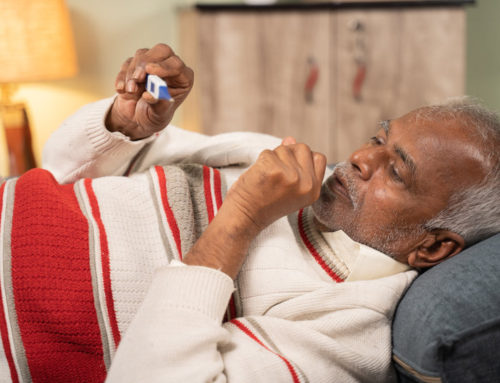Share This Story!
Your Changing Nutritional Needs
As people get older, nutrition needs may change. Some nutrition facts apply to everyone, regardless of age: try to eat more fruits, vegetables, and whole grains. Avoid processed foods. But there are some aspects of nutrition that people need to start paying more attention to past the age of 60. Consider these 4 nutrition facts.
1. Track your salt
Overconsuming sodium is a significant risk factor for heart disease. Excess sodium can increase blood pressure. Recent research has shown that older adults are more sensitive to sodium and have a higher risk of heart attack, heart failure, and stroke. Limiting sodium is more than just tracking table salt. Pre-packaged foods are often chock-full of extra sodium. Read nutrition labels and try to keep daily sodium intake under 2,300mg with a stretch goal of fewer than 1,500mg.
2. Whole grains improve digestion
Eating whole grains is a crucial way to improve digestive health and meet daily fiber intake. Studies have also found that 2-3 daily servings of whole grains can reduce a person’s risk of heart disease by up to 30%. In adults over age 50, men should aim for 30g of fiber daily, and women should aim for a minimum of 21g.
3. Prioritize your bone health
Bone health is a crucial health issue for older adults, especially women. As people get older, bone tissue breaks down faster than bone rebuilds. In some people, this raises the risk significantly for osteoporosis. To combat bone loss, aim to get at least 1,200mg of calcium and 800IU of vitamin D each day. Many adults are vitamin D-deficient and may need to take a supplement in addition to eating foods rich in calcium and vitamin D.
4. Your food can prevent depression
Vitamin B12 deficiencies are linked with higher rates of depression, dementia, and mental impairment in older adults. As people age, the body has a more challenging time absorbing vitamin B12. Aim to eat foods like shellfish and eggs, which are rich in vitamin B12. Seniors may also speak with a healthcare provider about possible supplements.
The golden years
Many seniors enjoy retirement as happy, golden years. These years are made even more joyful when seniors are in good health. Making good nutrition choices is the first step to making the most of the golden years. Speak with a healthcare provider for individual recommendations regarding supplements and nutrition needs.





